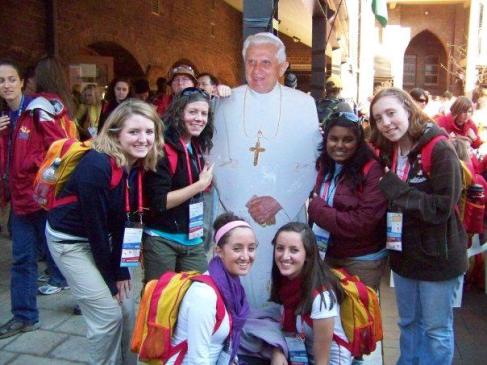“They defeated [the Devil] by the blood of the Lamb and the word of their testimony.” – Revelations 12:11
Stories are powerful. Indeed, we can argue theology all day, but when you or I tell the story of our own faith, of our conversion, no one can tell us, “That didn’t happen to you!” Stories make theological truth real. And Jesus knew this using story after story, parable after parable to proclaim Truth.
Below are some articles, videos, etc. related to the conversion stories of several Catholics. When I was in high school, it was the stories of converts that made me realize the beauty of what I really have. Feel free to familiarize yourself with some below and use them during your small group discussions.
Articles:
WhyI’mCatholic.com: Athiest Convert, Devin Rose
LifeTeen.com: Incomplete without the Eucharist
Videos:
OneBillionStories.com: Dan Driver, From Drugs and Rock to Hardcore Catholic
Podcasts:
Chris Padgett’s Conversion: Protestant Rock to Catholic
Jennifer Fulwiler: Conversion Diary of a former Atheist
I also encourage you to take some time in prayer before this class to articulate your OWN story. Sharing your testimony with your group is one of the most powerful things you can do. Here are few simple steps to writing this witness:
1) What was going on in my life BEFORE I believed in God/I made my parents’ faith my own/I cared about the Church/I knew Jesus? What were my struggles/questions/doubts? (Be careful not to glorify sin here. The temptation is to tell a big, shocking story, but only tell the details necessary. The point of your testimony is to glorfy GOD, not our sins.)
2) What happened to change my mind/my heart/the direction of my life? How did God intervene? What event or series of events brought me into closer relationship with Jesus? Was it like getting hit in the head with a 2×4 or was it more gradual? Did God use an event or moment in time or did He use someone else to speak to my heart?
3) How is my life different? How does my relationship with God and others look different than before my conversion? How have my struggles changed? (Becuase, let’s face it, they never go away!)
Too often, I hear people say, “My story isn’t that big of a deal.” Or “No one cares about my conversion. It was so gradual. Heck, I’m no St. Paul or St. Augustine!” There is no such thing as an uniportant testimony. Think about it, if GOD (you know, the creator of heaven and earth!) has done something…ANYTHING in your life it is a big deal because anytime He acts it is a big deal. Besides, there are kids in your group who need to hear stories of gradual conversion just as much as there are kids who need to hear the ‘knocked off your horse’ stories.
Finally, this might be a good week to bring some art into your group’s discussion. Above is a rather well-known painting called “The Conversion of St. Paul” by Caravaggio. I have had some excellent conversations with teens using art. Ask them questions like, “Where is the light coming from?” “Look at the way Paul is holding his arms. What does this indicate to you?” “What do you think the other man in the painting is thinking?” If you do want to do an activity such as this, let me know ahead of time so I can make color copies for you.




